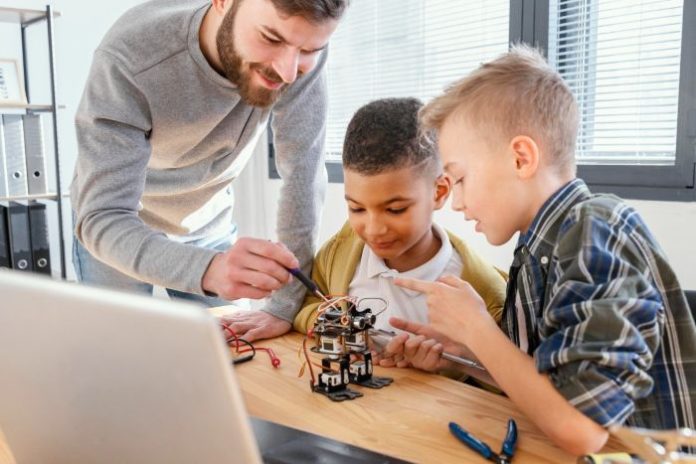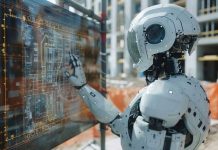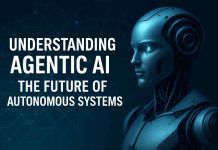There’s a quiet shift happening in classrooms, and it’s not about replacing teachers or rebuilding the entire education system overnight. It’s something softer, something you almost feel before you see. AI is slowly shaping the road educators walk every day, giving them new tools, new ideas, and sometimes even a little space to breathe in a job that rarely slows down.
Most conversations about AI and education jump straight to disruption. But when you actually listen to teachers, you hear something different. You hear people trying to better serve their students, trying to protect their energy, trying to hold onto the heart of their work. AI isn’t stepping in to take over the classroom. It’s just helping carry the parts that weigh teachers down.
Honestly, that alone feels like a shift.
Key Takeaways
- AI subtly reshapes classrooms by alleviating teachers’ workload, allowing them to focus on meaningful connections with students.
- Personalized learning becomes more realistic as AI helps identify student struggles and adapt lessons accordingly.
- AI fosters creativity by giving teachers time to design engaging projects and lessons, enhancing the learning experience.
- The integration of AI in education necessitates teaching students critical thinking and responsible use of technology.
- Equity remains a key concern, as AI’s impact depends on access to technology and training in different educational settings.
Table of contents
The Changing Role of the Educator
Educators have always worn an impossible mix of hats. Instructor, mentor, counselor, content creator, curriculum strategist, and sometimes the only person in the room who knows how to fix the projector. The job already asks more than anyone should have to give, and every year the responsibilities stack a little higher.
And AI steps in quietly.
It’s not removing those responsibilities, though. It’s redistributing them. Many teachers now use AI to handle repetitive work like drafting worksheets, formatting lesson plans, or generating quick practice questions. Those tasks aren’t the soul of teaching. They’re the noise. The energy drain. The part of the job that creeps into evenings and weekends when the classroom lights are already off.
I guess what surprises a lot of people is how teachers are using AI to get closer to their work, not farther from it. For many, AI isn’t a shortcut. It’s shaping the road back to the parts of teaching that feel human.
Personalized Learning Becomes Realistic
For years, personalized learning felt like a promise no one had the time or tools to keep. One teacher. Thirty students. One hour. You can care deeply about every learner in the room and still have no realistic way to meet each one exactly where they are.
But things are shifting now.
Adaptive platforms can show where students struggle and how they learn best. Teachers can see patterns earlier. They can make adjustments without restarting a lesson from scratch. And a simple example is the rise of AI voice translators that help multilingual students understand instructions in real time, which makes the classroom feel more inclusive for everyone.
You know, when something so small opens a door like that, it sticks with you.
This isn’t about turning learning into an algorithm. It’s about giving teachers a clearer window into each student’s experience. And that clarity creates room for moments that might have gone unnoticed before.
Creativity Takes a Front Seat Again
One of the quiet frustrations in education is how little space teachers get to be creative. They want to design smarter discussions, richer projects, and lessons that feel alive. But the grind of planning and paperwork has a way of muffling that spark.
So when AI gives even a bit of that time back, something shifts.
Teachers can brainstorm new examples, play with different explanations, or reshape a single idea into multiple versions. They can take a complicated concept and make it simple or make it interesting or make it fun. Creativity stops being a late-night luxury under the hum of the laptop. It becomes part of the day again.
And when educators feel that spark returning.
Students feel it, too.
The Human Element Becomes More Important
It’s easy to imagine AI making classrooms more technological, but the reality feels different. When teachers use AI to lighten the load or plan more smoothly, they end up with more time for the one thing technology will never replicate.
Connection. Conversations. Encouragement. Feedback shared at the right moment. The things students remember long after the grades fade into the background.
Honestly, that human piece has always been the center of teaching. AI doesn’t change that. If anything, it makes more room for it.
And the teachers who use AI well tend to treat it like a partner, not a replacement. They’re not handing over the wheel. They’re just letting AI clear the clutter so they can keep their eyes on shaping the road ahead.
The New Skills Students Need
As AI becomes a normal part of education, students aren’t just learning through it. They’re learning about it. That means critical thinking, media literacy, and responsible use are becoming essential skills.
Students need to understand how AI works and where it might mislead them. They need to question information instead of accepting it without a second thought. They need to learn about bias, privacy, and digital ownership.
And teachers are helping them do that while also figuring out their own relationship with AI. It’s a lot to hold. Still, it’s an opportunity for schools to help students navigate a fast-changing world with curiosity and confidence.
Maybe that’s one of the most important lessons right now.
Equity Is Still the Biggest Question
AI has the power to close learning gaps, but it also has the power to widen them. Access has never been equal, and technology doesn’t automatically balance that out.
Some students have advanced tools at home. Others don’t even have stable internet. Some teachers get thorough training. Others get a single rushed workshop. Some schools can invest in new platforms. Others can barely cover the basics.
AI can empower teachers, but only if everyone has the support and infrastructure they need. The future of AI in education won’t be defined by how impressive the tools are. It’ll be shaped by who gets to use them.
The Road Ahead for Educators
AI isn’t shaping one road for educators. It’s shaping many. Some teachers will embrace it fully. Others will take just what fits. Most will find a middle ground that works for their students.
What matters is that teachers stay in control of the journey. AI works best when it supports the empathy, judgment, and creativity that only humans can bring into a classroom. Teachers decide how it fits. They decide what it improves and what it shouldn’t touch.
And maybe the biggest shift shaping the road in education isn’t the technology at all. Maybe it’s the renewed focus on the human side of teaching. When AI handles a bit of the background noise, teachers can give more of their attention to the moments that matter.
Honestly, that might be the most meaningful change of all.











